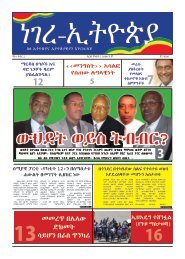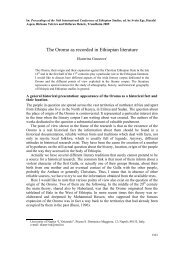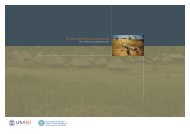MatabelelandReport
MatabelelandReport
MatabelelandReport
You also want an ePaper? Increase the reach of your titles
YUMPU automatically turns print PDFs into web optimized ePapers that Google loves.
REPORT ON THE 1980S DISTURBANCES IN MATABELELAND AND THE MIDLANDS<br />
Compiled by the Catholic Commission for Justice and Peace in Zimbabwe, March 1997<br />
PART ONE : DATA SOURCES AND METHODOLOGY<br />
A substantial body of largely unpublished evidence has long been in existence detailing thousands of atrocities<br />
perpetrated by both dissidents and the security forces in Matabeleland and the Midlands of<br />
Zimbabwe, between Independence in 1980 and the Amnesty in 1988. This report has collated and analysed this<br />
evidence, which includes data records that were contemporary to the 1980s, as well as information from interviews<br />
conducted during the 1990s.<br />
As well as tabulating available data for all areas, this report also provides a comprehensive outline of abuses within two<br />
chosen case study regions of Zimbabwe.<br />
The report also draws attention to the legacy of practical and personal difficulties which continue to affect those who<br />
suffered human rights abuses in the 1980s.<br />
1.SELECTION OF CASE STUDY AREAS<br />
Archival material provided evidence that human rights abuses were widespread throughout Matabeleland North and<br />
South, and also at times in the Midlands of Zimbabwe. It was decided to canvas actively additional data, but time and<br />
funding excluded collection on a national scale. After consideration it was decided to concentrate data collection in two<br />
administerial districts only; Tsholotsho/Nyamandlovu in Matabeleland North and Matobo in Matabeleland South.<br />
Data on record made it clear that the two parts of Matabeleland had qualitatively different experiences of the<br />
Government action, with Matabeleland North being subjected to a massive 5 Brigade onslaught in 1983, and<br />
Matabeleland South experiencing an extremely long and harsh food embargo, together with mass detentions, in 1984.<br />
The decision as to which administrative district to target in each province was made partly with practical criteria in<br />
mind: the two chosen areas are near to Bulawayo, and readily accessible from it. CCJP also already had a substantial<br />
number of interviews from Tsholotsho on their files. The presence of Bhalagwe Camp in the second chosen area,<br />
Matobo, was an important selection criterion.<br />
The two areas targeted for the case studies were:<br />
1. TSHOLOTSHO/ NYAMANDLOVU: in the early 1980s, Tsholotsho Communal Land north of Bulawayo,<br />
2. was administered together with the more sparsely populated commercial farmland of Nyamandlovu adjacent to it.<br />
(This adjacent commercial farmland has since been incorporated into an administerial district known as Umgusa:<br />
the map of Zimbabwe on page designates district boundaries as used in this report, which in a few cases do not<br />
coincide with district boundaries recognised in 1996). Atrocities by Government agencies were known to be severe<br />
in Tsholotsho in 1983: the adjacent commercial farmland of Nyamandlovu was known to have been hard hit by<br />
dissidents. Making Nyamandlovu part of the case study area allowed for the inclusion of data on dissident atrocities<br />
in the commercial farming and forestry resettlement areas of Nyamandlovu: there was almost no information on<br />
dissidents forthcoming from people based in the Tsholotsho Communal Lands.<br />
3. MATOBO (known as KEZI District prior to the 1980s), a largely communal area south of Bulawayo, where<br />
atrocities were known to be severe in 1984. In particular, there was already substantial data on record of detentions,<br />
beatings and killings at Bhalagwe Camp, near Maphisa (previously called Antelope).<br />
Further evidence of atrocities in other parts of the country came to light during this process, and tables showing known<br />
atrocities in all affected areas can be found immediately following the two main case summaries in Part Two of this<br />
report.<br />
20







